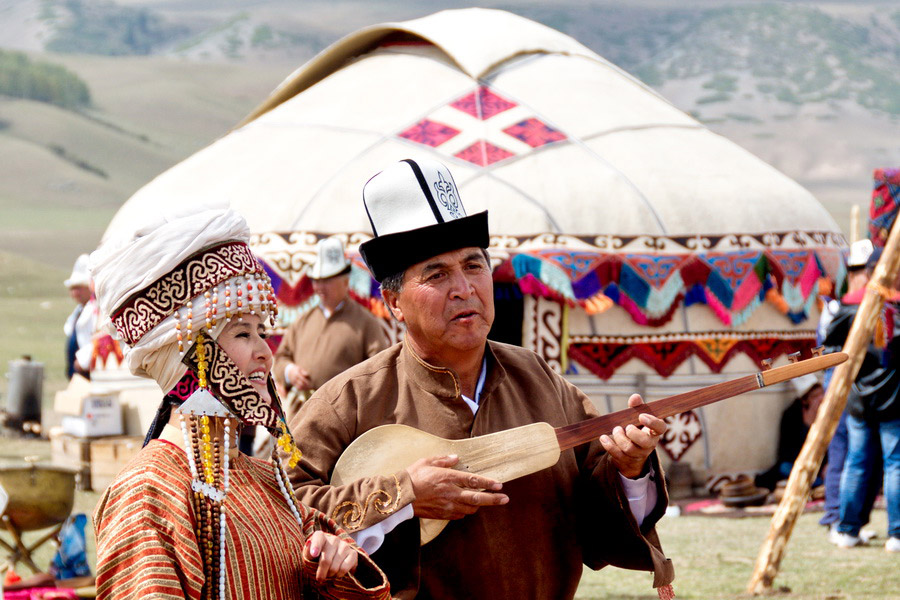
Kyrgyzstan offers a wealth of sights to explore, including UNESCO World Heritage Sites such as the Sacred Mountain Sulaiman-Too in Osh, the Great Silk Road routes, and the Western Tien Shan. Additionally, the country boasts numerous intangible cultural heritage masterpieces. By delving into this text, you'll discover why the Kyrgyz people experience trances, the meaning behind kok-boru and ak-kalpa, the essential dowry every bride should have, and much more.
Intangible UNESCO Sites in Kyrgyzstan
The UNESCO List of Intangible Cultural Heritage of Humanity features 15 sites from Kyrgyzstan:
- Art of Akyns, Kyrgyz epic tellers (added to the Representative List of Intangible Cultural Heritage in 2008),
- Ala-kiyiz and Shyrdak, art of Kyrgyz traditional felt carpets (inscribed on the List of Intangible Cultural Heritage in Need of Urgent Safeguarding in 2012),
- Kyrgyz epic trilogy: Manas, Semetey, Seytek (added to the representative list in 2013),
- Traditional knowledge and skills in making Kyrgyz and Kazakh yurts (Turkic nomadic dwellings) (added in 2014),
- Aitysh/Aitys, art of improvisation (added in 2015),
- Nooruz (added in 2016),
- Flatbread making and sharing culture: jupka (added in 2016),
- Kok Boru: Traditional Horse Game (added in 2017),
- Ak-kalpak craftsmanship, traditional knowledge and skills in making and wearing Kyrgyz men's headwear (added in 2019),
- Traditional intelligence and strategy game: Toguz Korgool (added in 2020),
- Falconry, a living human heritage (added in 2021),
- Nomad games, rediscovering heritage, celebrating diversity (added to the UNESCO Best Practices List for Safeguarding Intangible Cultural Heritage in 2021),
- Telling tradition of Nasreddin Hodja/ Molla Nesreddin/ Molla Ependi/ Apendi/ Afendi Kozhanasyr Anecdotes (added to the representative list in 2022),
- Midwifery: knowledge, skills and practices (inscribed in 2023),
- Elechek, Kyrgyz women's headdress: traditional knowledge and rituals (inscribed in 2023).
Art of Akyns, Kyrgyz epic tellers
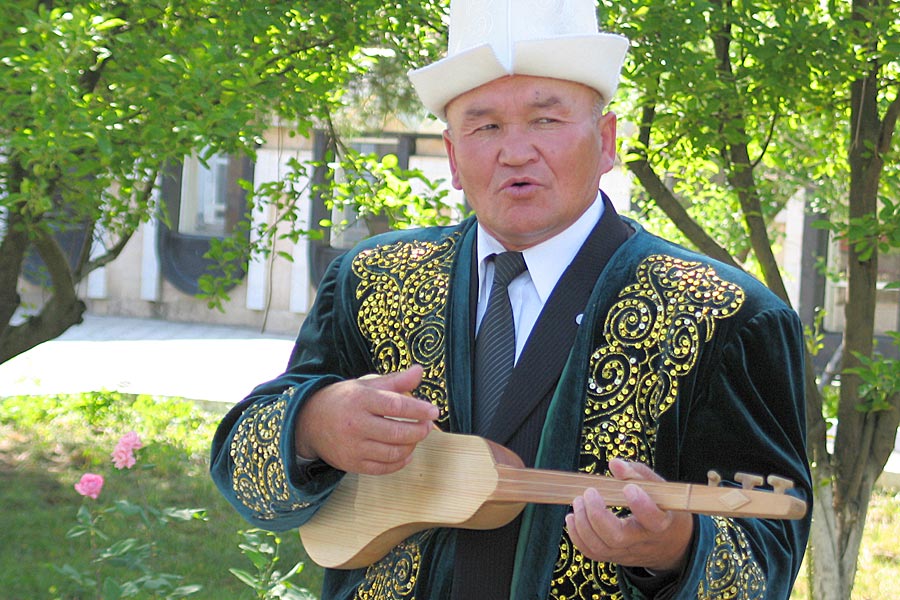
This art form combines poetic storytelling, music, and improvisation to bring epic tales to life. Kyrgyzstan's most renowned epic is Manas, which is 16 times longer than the Iliad and the Odyssey combined. During their performances, akyns showcase the rich culture and traditions of the Kyrgyz people. These singers must have an excellent command of the national language and be adept at conveying emotion through intonation, facial expressions, and gestures. Akyns often accompany themselves on a musical instrument called the komuz.
Ala-kiyiz and Shyrdak, art of Kyrgyz traditional felt carpets
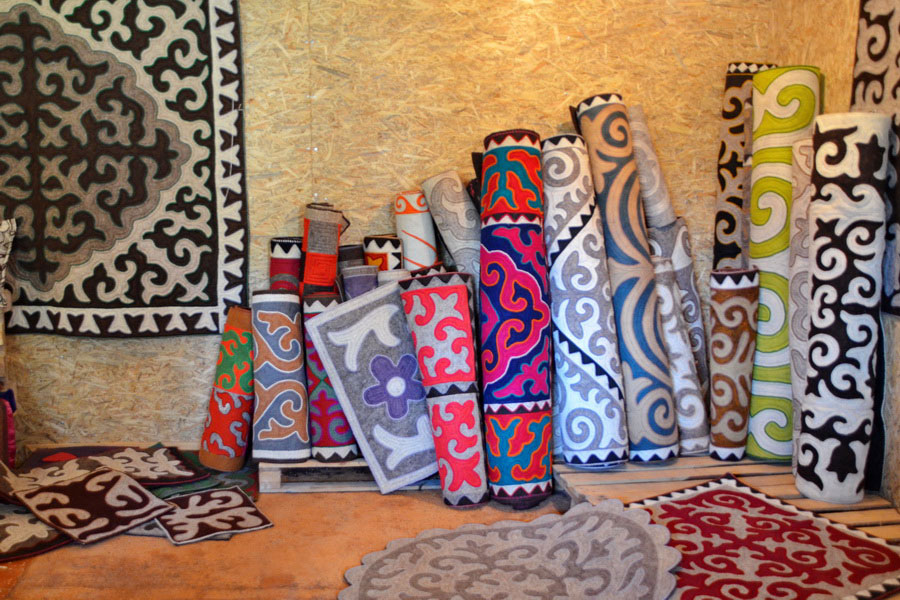
The most well-known carpets in Kyrgyzstan are the shyrdak and ala-kiyiz, both of which are felt carpets with centuries-old traditions passed down through generations. Almost every family in Kyrgyzstan owns a shyrdak, and it's customary for a bride's dowry to include one. However, in recent years, the production of shyrdaks has shifted away from manual labor, and genuine felt is increasingly being replaced by synthetic materials. As a result, shyrdaks are now at risk of disappearing. Similarly, ala-kiyiz carpets are becoming harder to find in Kyrgyz households.
Kyrgyz epic trilogy: Manas, Semetey, Seytek
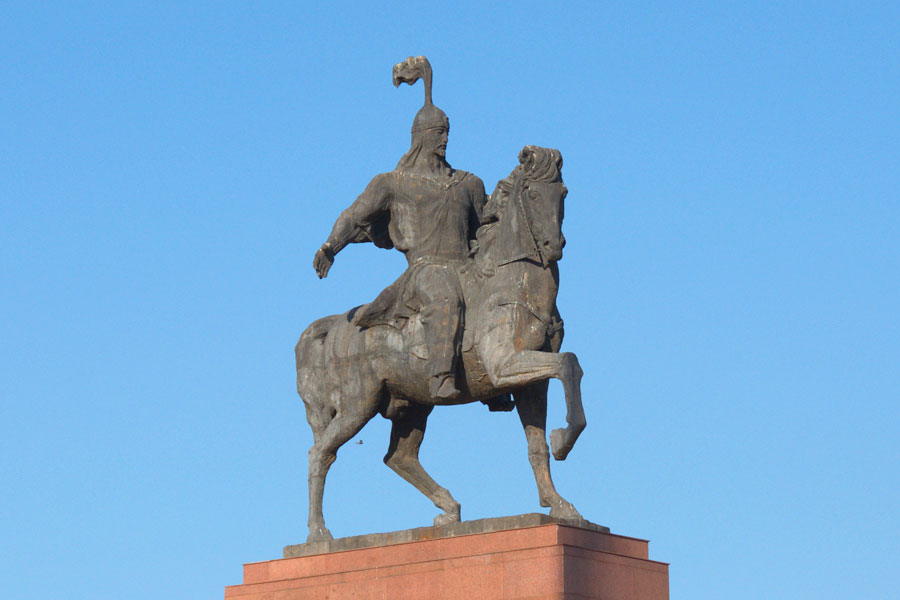
This trilogy narrates the unification of various Kyrgyz tribes into a single nation. These epics, an essential part of the Kyrgyz people's cultural heritage, have been passed down orally for centuries. When performing the epics, the narrators, called manaschis, enter a trance-like state, enabling them to recite the stories for up to 13 hours without interruption. Learning the art of reciting these epics requires specialized training.
Traditional knowledge and skills in making Kyrgyz yurts
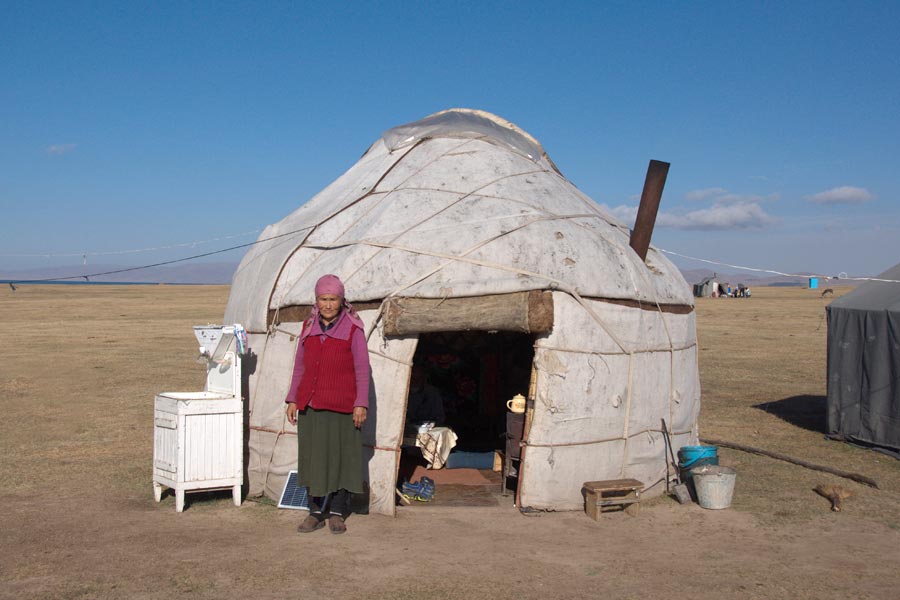
A yurt is a traditional dwelling for nomadic peoples, featuring a round frame without a foundation and covered with felt adorned with embroidered patterns. All materials used in its construction are natural. Yurts are typically the venue for traditional celebrations, including weddings, as well as memorial events. This intangible cultural heritage is also recognized by UNESCO in Kazakhstan.
Aitysh/Aitys, art of improvisation
Aitish is a traditional Kyrgyz art form that fosters public speaking and improvisation skills. Participants must improvise on a given topic while accompanying themselves on the komuz, the national Kyrgyz instrument. Typically, two people compete in Aitish, speaking in verses of any length. Aitish is also recognized by UNESCO in Kazakhstan.
Nooruz
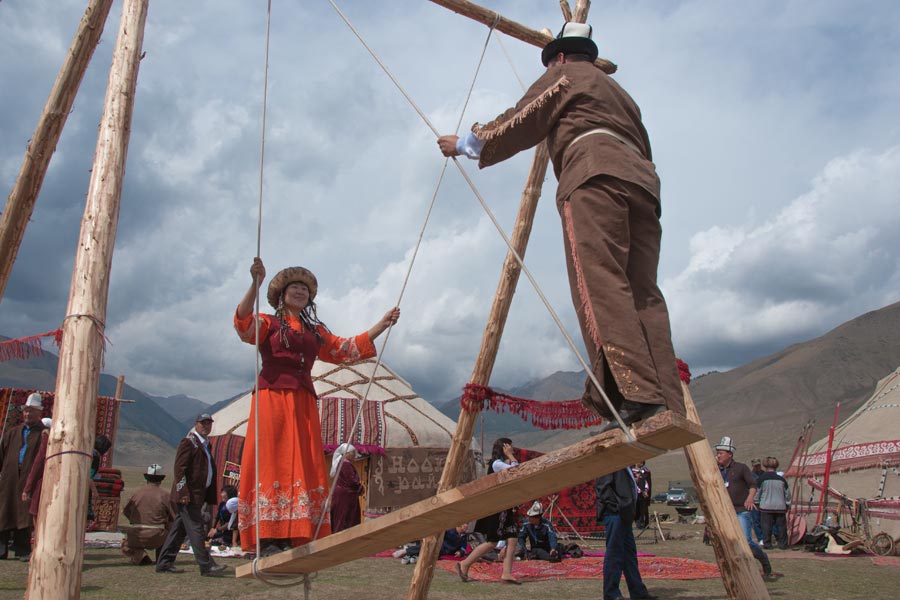
This ancient holiday is celebrated not only in Central Asian countries, but also in Turkey, Iran, Iraq, India, Azerbaijan, and Pakistan. Nooruz falls on March 21st, the day of the vernal equinox, symbolizing the beginning of the new year. On Nooruz, it is customary to prepare festive dishes, visit guests, and organize folk festivals. This holiday is celebrated in all localities of Kyrgyzstan.
Flatbread making and sharing culture: jupka
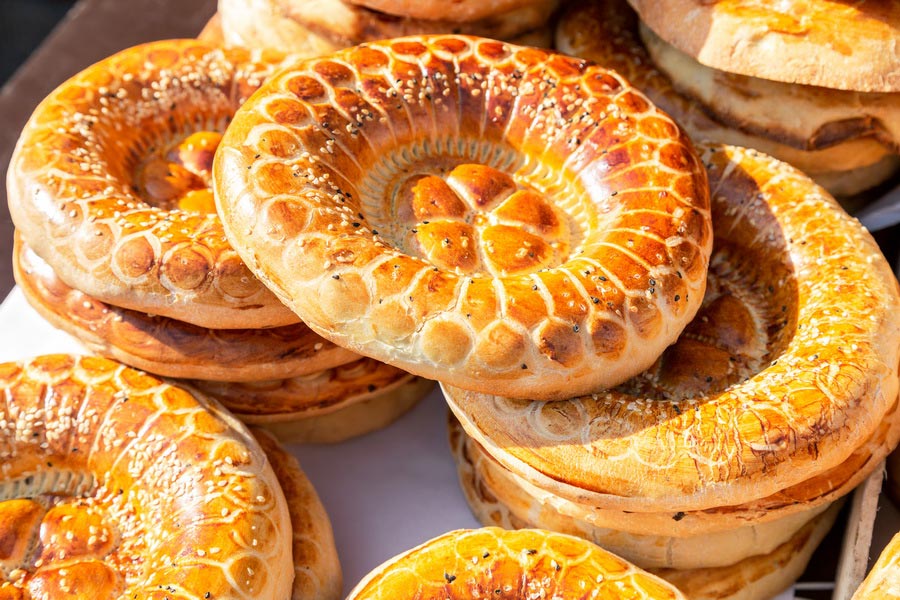
Zhupka (stress on the last syllable) is a traditional Kyrgyz bread. It is a thin, dry flatbread that can be stored for a long time without losing its nutritional properties. Nomads used to eat zhupka by soaking it in milk or water. To this day, shepherds take these cakes with them when they head to months-long pastures. Zhupka is also enjoyed in cities. It is customary to break this type of bread by hand rather than cutting it with a knife. This is usually done by the head of the family or the guest of honor.
Kok Boru: Traditional Horse Game
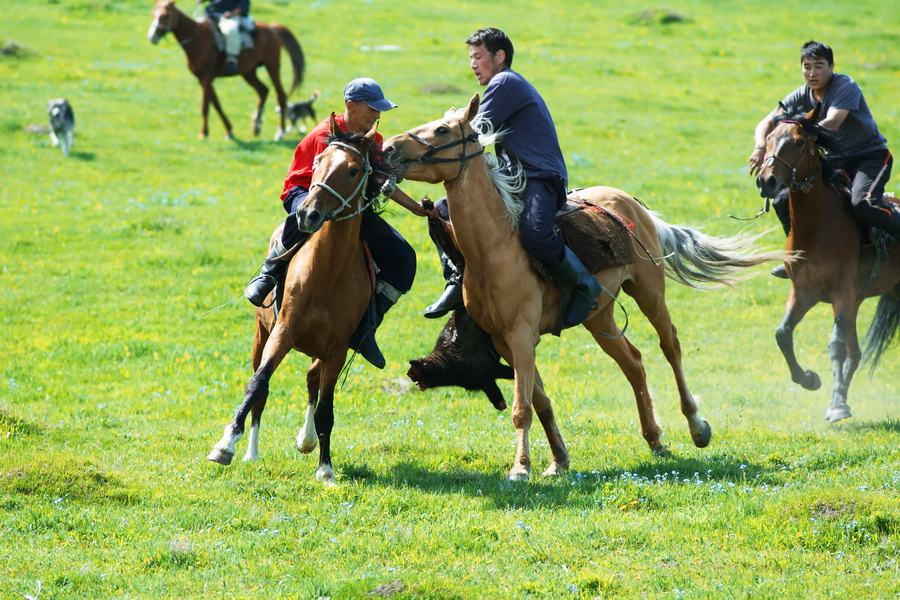
This equestrian game, also known as goat-rolling, involves several riders. The main goal of the game is to take the carcass of a goat from an opponent and keep it for as long as possible. Today, kok-boru is both a national sport and a favorite pastime in Kyrgyz villages. Kok-boru has gained worldwide fame thanks to the Nomad Games, which have been held in Kyrgyzstan since 2014.
Ak-kalpak craftsmanship, traditional knowledge and skills in making and wearing Kyrgyz men's headwear
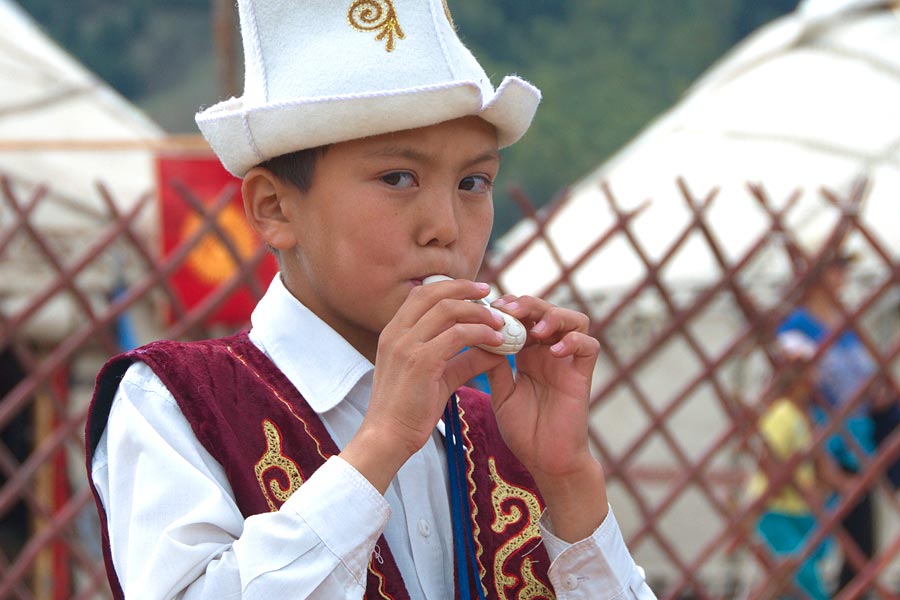
Ak-kalpak is the national headwear for men in Kyrgyzstan. Literally meaning "white cap," this cylindrical headdress is made of felt. On any holiday, whether family or national, men wear kalpaks (emphasis on the second syllable). There are more than 80 types of kalpaks, each with its own unique characteristics, with patterns being the most common. The Ak-Kalpak symbolizes the unification of 40 Kyrgyz tribes.
Traditional intelligence and strategy game: Toguz Korgool
Toguz Korgool is a unique game enjoyed by people of all ages and from different countries. Today, it is typically played on special boards, but in the past, it involved using holes and stones. In fact, "Toguz Korgool" translates to "nine stones." This game helps develop mathematical and social skills and is also recognized by UNESCO in Kazakhstan and Turkey.
Falconry, a living human heritage
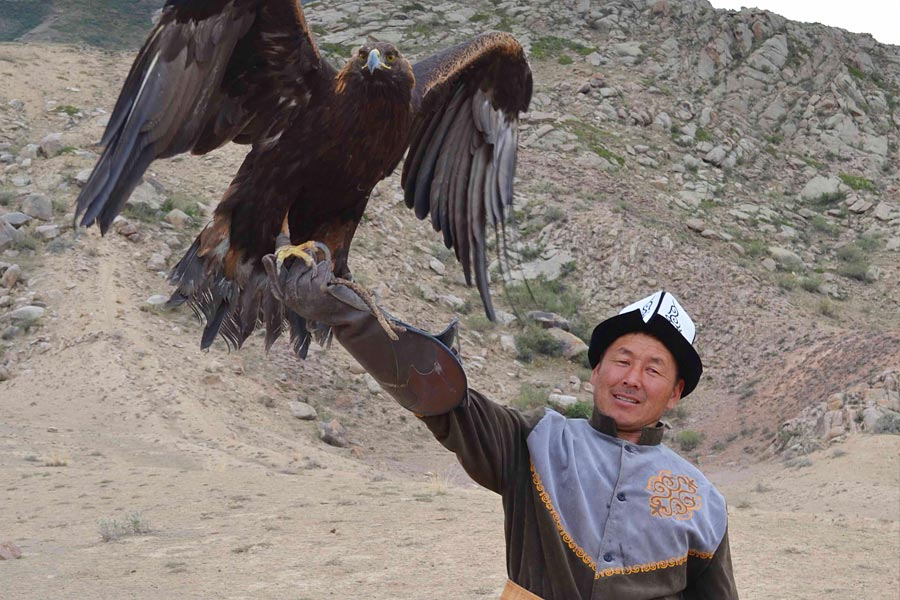
This remarkable type of hunting, in which a bird assists a person in capturing prey, has been a part of Kyrgyzstan's culture for centuries. Researchers have discovered evidence within modern-day Kyrgyzstan that confirms the existence of falconry dating back to the 2nd millennium B.C. Today, falconry is more of a form of entertainment than a means of obtaining food.
Nomad games, rediscovering heritage, celebrating diversity
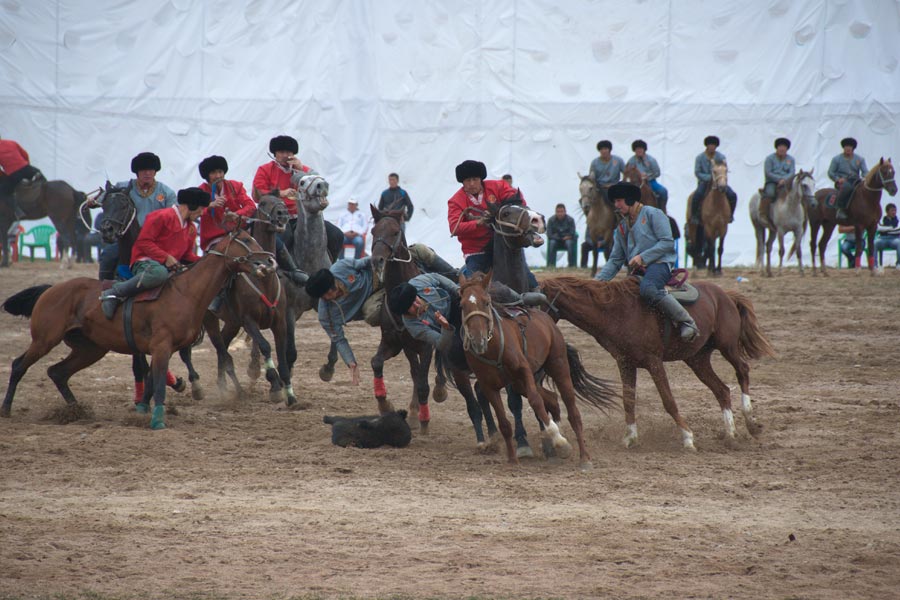
The World Nomad Games, which originated in Kyrgyzstan in 2014, quickly gained popularity not only among Central Asian countries but also throughout Europe. These games were a revival of traditional nomadic pastimes, including goat-racing, falconry, horseback archery, tug-of-war, wrestling, horse racing, and other sports featured in the World Nomad Games. In the inaugural games held in 2014, representatives from 19 countries participated. By 2016, the number of participating countries increased to 60, and in 2022, more than 100 countries took part in the World Nomad Games.
Telling tradition of Nasreddin Hodja/ Molla Nesreddin/ Molla Ependi/ Apendi/ Afendi Kozhanasyr Anecdotes
Upendi (or Afandi) is a beloved folklore character, more commonly known as Khoja Nasreddin. Tales of his adventures have been passed down through generations in Kyrgyzstan. These stories are both instructive and emphasize the importance of kindness and honesty. Without a doubt, anecdotes about Upendi are familiar to everyone in Kyrgyzstan.
Midwifery: Knowledge, Skills, and Practices
For centuries, midwives have played a pivotal role in supporting pregnant women and new mothers. Their role extends beyond mere companionship during pregnancy; they actively prepare women for childbirth, assist during the delivery, and provide crucial support in the days following the birth. In Kyrgyzstan, this expertise is passed down from seasoned midwives to new mothers, blending education with practical guidance. The profession's deep roots in the region's social, cultural, and traditional fabric underscore its importance. Interestingly, Kyrgyzstan shares this recognition of midwifery as an intangible UNESCO heritage with other countries like Colombia, Cyprus, Germany, Luxembourg, Nigeria, Slovenia, Togo, and Colombia.
Elechek: The Kyrgyz Women's Headdress - Traditional Knowledge and Rituals
The elechek, a traditional headdress of married Kyrgyz women, carries a rich history. Its origins are debated; some believe it emerged during Islamic times, while others argue it dates back even further. This long white cloth, often extending up to 40 meters, serves multiple purposes. Originally used to wrap around the head, part of the elechek could also be repurposed as a diaper for newborns. Later in life, it takes on a more solemn role, serving as a shroud after a woman's death. Today, the elechek, often adorned with intricate embroidery, is a vibrant part of national attire, worn during festive occasions like holidays and weddings. In Kyrgyzstan, it also plays a ceremonial role in weddings, where the bride is wrapped in an elechek, signifying her new status.
Kyrgyzstan's intangible heritage extends far beyond the items on the UNESCO list. However, if you're planning your first visit to Kyrgyzstan, we recommend familiarizing yourself with those aspects that are recognized and celebrated by the global community.
Learn more about the tangible UNESCO World Heritage Sites in Kyrgyzstan.

